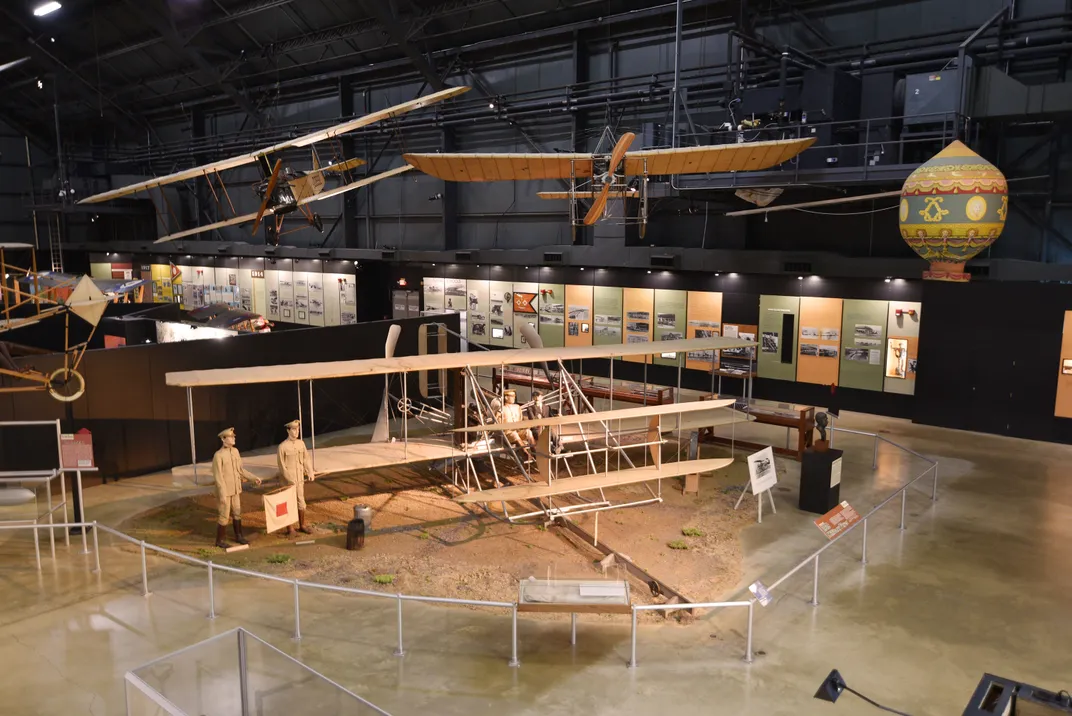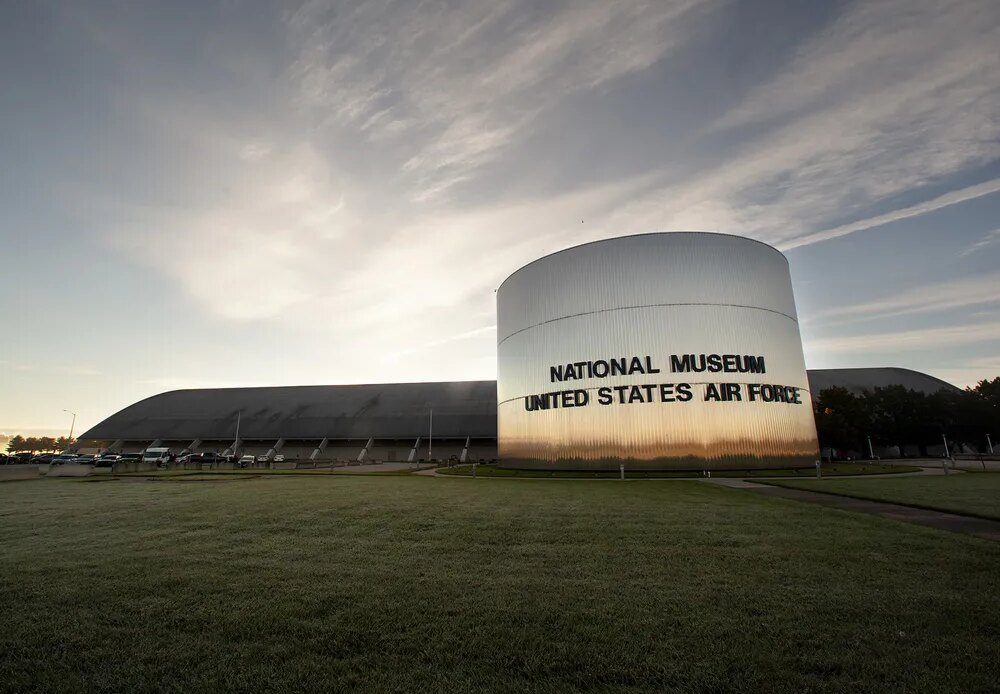The National Museum of the United States Air Force is on the grounds of Wright-Patterson Air Force Base in Dayton, Ohio.
U.S. Air Force photo by Ty Greenlees
The National Museum of the United States Air Force, the world’s oldest and largest military aviation museum, stretches 20 indoor acres across Wright-Patterson Air Force Base in Dayton, Ohio. Located some five miles northeast of downtown, out near the silos and cornfields of Middle America, NMUSAF preserves more than 350 aerospace vehicles and missiles, and thousands of other artifacts.
“The museum is of unparalleled size and scope,” says Alex Heckman, vice president of Carillon Historical Park, a component of Dayton Aviation Heritage National Historical Park and home to the Wright Brothers National Museum. “But it’s the history and significance of its collections which make it remarkable. From Glenn Miller’s summer uniform cap to a taxidermied World War I homing pigeon to the airplane that transported FDR to the Yalta Conference, complete with his special wheelchair lift, there is a national treasure awaiting visitors at every turn.”
In celebration of the museum’s centennial this year, these ten artifacts show—era by era—how the once small engineering study laboratory near an Ohio cow pasture turned into a world-renowned institution.
Early years, World War I and the Liberty engine
On December 17, 1903, Wilbur and Orville Wright, two brothers from Dayton, Ohio, made the world’s first flight on the windswept beaches of Kitty Hawk, North Carolina. The following year, the self-funded brothers, tired of hauling their aircraft some 700 miles on costly research trips, moved their aeronautical experiments from Kitty Hawk to Huffman Prairie, a cow pasture eight miles northeast of their Dayton home at 7 Hawthorn Street.
“The Wrights conducted most of their work at Huffman Prairie,” says Doug Lantry, a curator and historian at NMUSAF. “In those days, Dayton was at the middle of industry, transport and access. And the city had a tangible connection to invention and innovation, so the American military placed its research and development arm near Huffman Prairie at McCook Field.”
NMUSAF’s Early Years Gallery U.S. Air Force photo by Ken LaRock
Located some ten miles southwest of…
Click Here to Read the Full Original Article at Travel | smithsonianmag.com…
